Theoretical foundations of nativity research
The theme of the traditional characters of the Ukrainian nativity scene in Mykola Vasylovich Gogol’s story “The Night Before Christmas” is extremely interesting and multifaceted. Gogol, as a master of words and a great connoisseur of Ukrainian culture, uses the images of nativity characters to create a unique atmosphere and a deeper understanding of Ukrainian traditions (Fig. 1).
Vertep is a traditional Ukrainian puppet theater that has deep roots in folk culture. It usually depicts biblical scenes, especially those related to Christmas, and also includes a variety of characters that symbolize various aspects of social and mythological life.
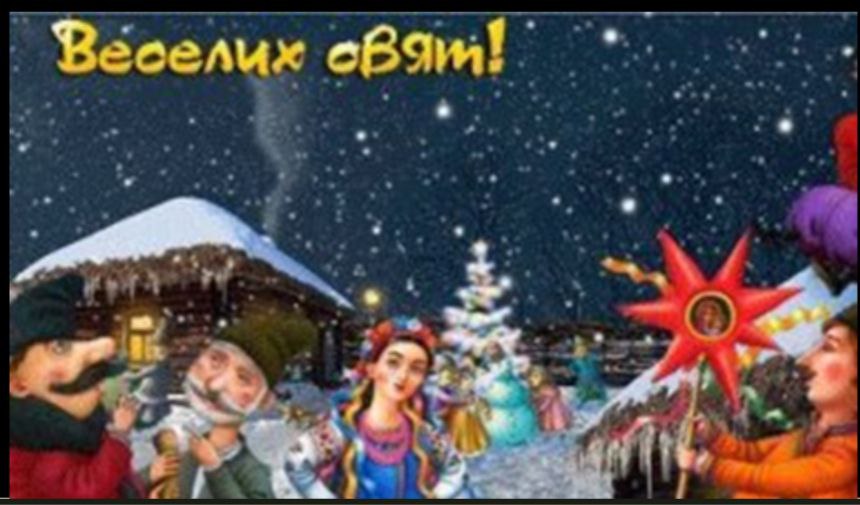
Nativity plays appeared in Ukraine in the first half of the 17th century and spread throughout the country. The theater was mentioned for the first time in 1667. This is an original, national phenomenon. Itinerant dyaks (“beer cutters”), bursak students (spudei) traveled Ukraine in the 17th and 18th centuries, earning money by teaching the children of wealthy lords. It was they who distributed handwritten literature and arranged theatrical performances, went with the nativity scene.
The nativity scene was a combination of religious Christian Christmas drama and secular play, elements of oral folk-poetic creativity.
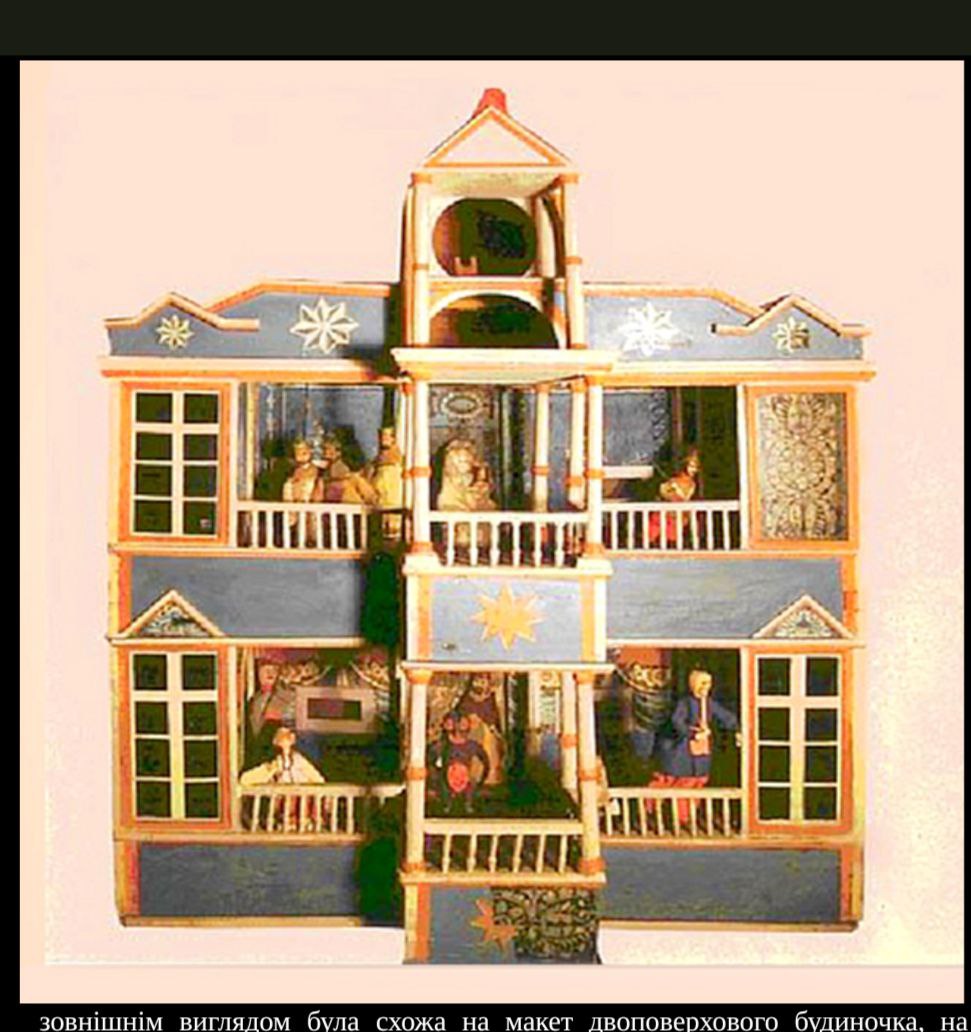
Performances of the Vertep took place in a special box, which outwardly resembled a two-story house, a kind of two-story stage. The performance began on the upper stage with biblical legends, the heroes of which were King Herod, the shepherds, Christ, the Magi, and the Virgin Mary (fig. 2), then it moved to the lower stage, where comic everyday scenes from real life were enacted. Vertepnyk, moving home-made dolls on darts or wooden sticks, changing his voice accordingly, spoke for each actor. Performances were shown at fairs, city squares, and in the houses of peasants and townspeople.
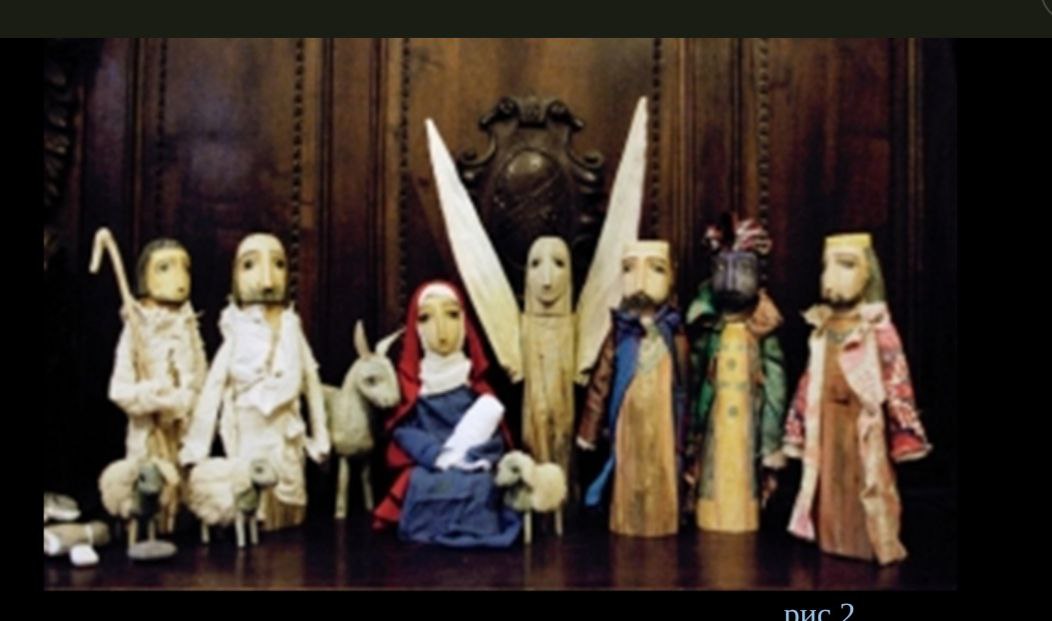
Dolls of the secular, household part conveyed the national flavor. Other characters performed here: a grandfather and grandmother, a soldier and a beauty, a gypsy with a gypsy woman, a Jewish shoemaker with a woman, Pip, a peasant with a goat, a Dyak, a Cossack. The diverse composition of these characters in their own way recreated the Ukrainian society of that time, its customs, likes and dislikes. In this part, a Zaporozhian man acted (he was even bigger than the other dolls) – a figure full of a sense of human dignity, strength that defeats all enemies. In his monologue, the story of the People’s Cossack liberation movement, the struggle of Ukrainians against various invaders and oppressors sounded. Lines from this monologue are written under numerous paintings of the Cossack Mamai. [3]
The characters of the interludes joked, sang, danced, etc., everyone acted according to their social, status, national, age characteristics and interests (Fig. 3). This created an educational and fun dynamic spectacle.
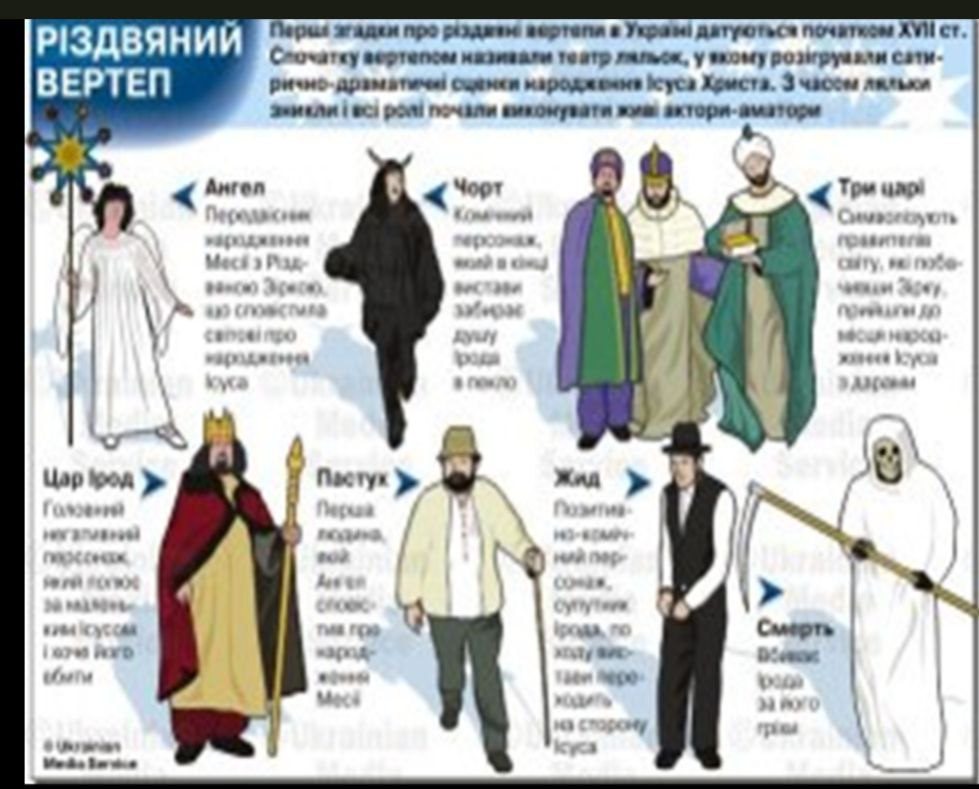
In Ukraine, the so-called living Vertep is also known, in which the roles of actors were played not by dolls, but by people. The action of such a nativity scene during the Christmas holidays can be found in our time on the streets of cities and towns of our country. In the photo, Nativity heroes during the Christmas celebration in the city of Lviv (Fig. 5).
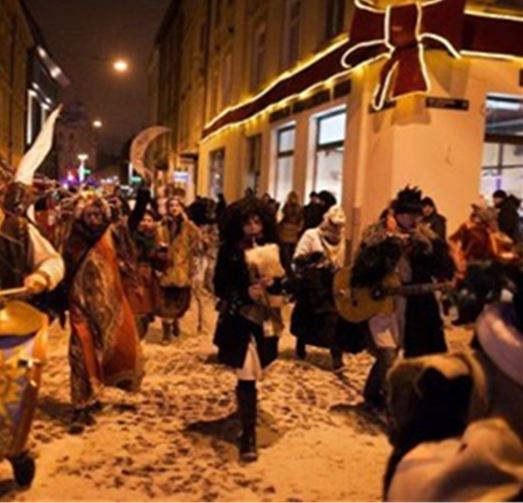
Adhering to folk traditions, M. Gogol introduces nativity characters into his works. In September 1831, the first part was printed, and in March 1832 – the second part of the collection “EVENINGS ON A FARM NEAR DIKANKKA”. These works were staged by M.V. Gogol is in the same row with the best writers of the world. The collection includes two prefaces and eight short stories, among them “THE NIGHT BEFORE CHRISTMAS”.
In the plot “Nights before Christmas” three lines are intertwined: the first is the line of the devil, the second is the line of Solokha’s suitors, the third is the line of Vakula and Oksana. And they are united by the image of the devil, which slowly turns into a “magical assistant” of the blacksmith. In M. Gogol’s story, the peculiarities of the Ukrainian nativity scene are vividly depicted, where the traditional characters of the folk theater act: Baba (Solokha, Tkachiha, Pereperchiha), Dyak, Head, Cossack, Blacksmith, Beauty, Tsaritsa, Kum, Shinkar. In the work, the upper and lower tiers are not separated, but closely connected. The majestic story of the Nativity of Christ is transferred to the earthly world, where man fights with the devil for light, goodness and happiness.
